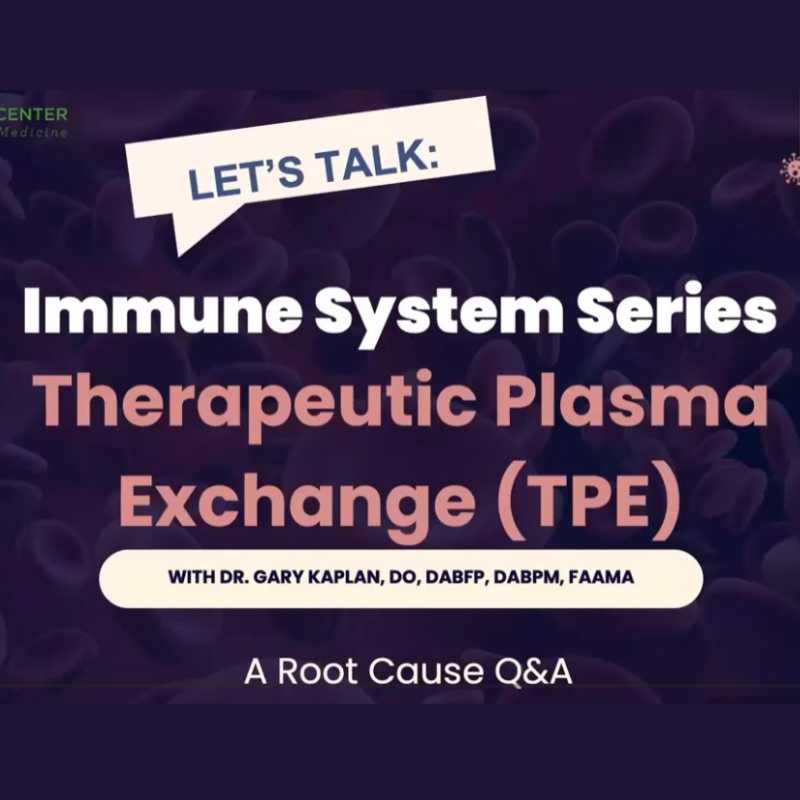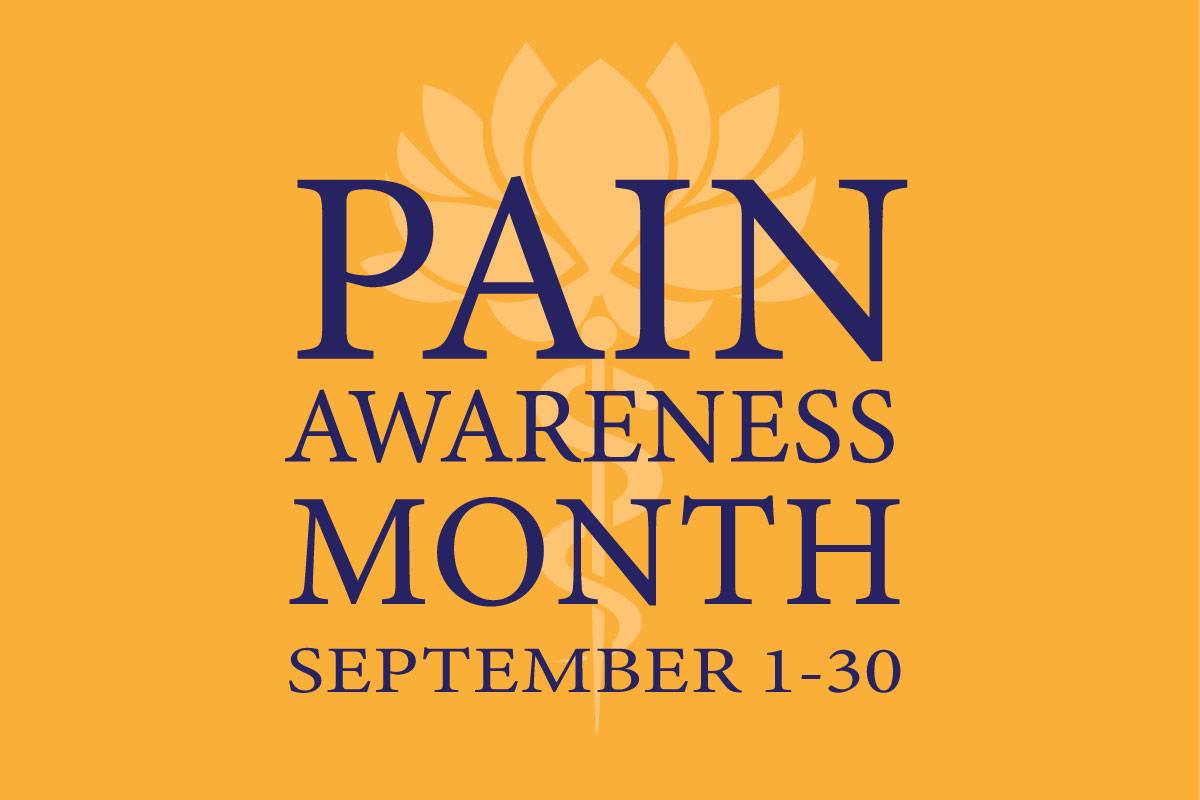
5 Ways We Can Keep Your Immune System Strong
December 10, 2025/by Kaplan Center
Want to Take Your Workout to the Next Level Next Year? These Tips Can Help
December 8, 2025/by Kaplan Center
Dr. Kaplan’s Dos and Don’ts of the Holiday Season
December 3, 2025/by Kaplan Center
Let’s Talk Webinar – A Root Cause Q&A
December 2, 2025/by Kaplan Center
Navigating Holiday Meals with Gut Issues: Simple Tips for a Comfortable Season
December 1, 2025/by Chardonée Donald, MS, CBHS, CHN, CNS, LDN
Craniosacral Therapy for TMJ | Say Goodbye to the Daily Grind
November 19, 2025/by Patricia Alomar, M.S., P.T.
From Compassionate Care to Personal Healing: A Letter to My Patients
November 18, 2025/by Kaplan Center
8 Steps to a Healthier Gut—and a Longer, Healthier Life
November 18, 2025/by Kaplan Center
Mid-Life Irritability & Fatigue Improved by Hormonal Balancing
November 13, 2025/by Lisa Lilienfield, MD
From Challenges to Change: Dr. Kaplan on Healthcare’s Biggest Challenges
October 29, 2025/by Kaplan Center
Overlooked Dangers of Mold Exposure and How to Stay Safe – Dr. Kaplan Talks to WUSA9
October 27, 2025/by Kaplan Center
Let’s ‘Fall’ Into Wellness: A Nutritionist-Approved Immune-Boosting Recipe for Cold and Flu Season
October 13, 2025/by Chardonée Donald, MS, CBHS, CHN, CNS, LDN
PANS/PANDAS – When Sudden Symptoms Signal Something More
October 9, 2025/by Kaplan Center
Beating Burnout, A Nutritionist’s Perspective
October 1, 2025/by Chardonée Donald, MS, CBHS, CHN, CNS, LDN
3 Things That Can Happen After Stopping GLP-1s
September 11, 2025/by Chardonée Donald, MS, CBHS, CHN, CNS, LDN
What Families Need to Know About COVID and Flu Season
September 3, 2025/by Kaplan Center
September is Pain Awareness Month
September 1, 2025/by Kaplan Center
Dr. Kaplan Spoke to Northern Virginia Magazine About COVID, Flu, and Immunity — Here’s What You Should Know
August 14, 2025/by Kaplan Center
“Why Do I Feel Like Crap?”: The Overlap Between Long COVID and Perimenopause
July 30, 2025/by Kaplan Center
Why People Are Turning to EMDR (and Why You Might Want to Too)
July 23, 2025/by Kaplan CenterAre you looking to improve your overall wellness?
Personalized care you can trust.
Our integrative, non-surgical treatment approach is highly successful in maintaining wellness and also treating chronic pain and illness. For more than 30 years, we have delivered superior, cutting-edge health care in the Washington, DC area.
QuickLinks
Contact Information
Tel: 703-532-4892
Fax: 703-237-3105
6829 Elm Street, Suite 300
McLean, Virginia 22101
Map It
Hours of Operation
Mon – Thu : 8 am – 5 pm, ET
Fri : 8 am – 12 pm, ET
8 Tips To Help You Manage Your Medications
/in Treatments, Wellness/by Gary Kaplan, DOFor many ailments, treatments most often involve some type of medication. Whether it’s an antibiotic to treat an infection, a statin to control cholesterol, or even a simple daily aspirin to reduce the risk of heart attack, we take the medications our providers recommend and hope for the best.
Painkillers, statins, sleeping pills, and other commonly prescribed medications all have their proper place in managing our health but can have unintended side effects. It is the provider’s responsibility to carefully explain what to expect from taking a particular drug.
Routinely evaluating prescriptions is extremely important, especially for older adults whose bodies are less efficient at metabolizing and clearing medications from the bloodstream, which can increase the risk of being overmedicated. Those who take multiple medications must be particularly aware of possible side effects and interactions with other drugs.
Here are 8 important tips to help you safely manage your medication intake.
1) Keep a list of all the medications and supplements you are taking, the prescribed dosages for each, why you are taking them, and the prescribing provider. Provide a copy to a family member, friend, or caretaker and keep a copy of this list in your wallet or on your refrigerator in case of an emergency.
2) Review your medications with your provider on a regular basis to ensure that the medications and doses are still appropriate.
3) Report any new symptoms you are experiencing as a result of taking a new medication to your provider as soon as they occur.
4) Be sure to tell your provider about all of the herbal remedies and nutritional supplements you are taking as they can interact with your prescribed medications.
5) Before you start a new medication, ask your provider about any potential side effects or interactions of your medications, medicinal herbs, and supplements.
6) If your medication seems ineffective, make sure to speak up so your provider can reconsider the drug or dosage.
7) Missing your meds may trigger unexpected symptoms or side effects so make sure to take your medications as directed to avoid complications.
8) If at all possible, use the same pharmacy for filling your prescriptions. This allows the pharmacist to determine if there are any interactions or side effects you should be aware of – especially if multiple providers are prescribing for you.
In summary, be sure you know what medications you’re taking and why. If you have questions, ask! Your provider and pharmacist are important resources and can help guide and manage your medications.
We are here for you, and we want to help.
Our goal is to return you to optimal health as soon as possible. To schedule an appointment please call: 703-532-4892 x2
This article was originally published in March 2015. It was reviewed in October 2024.
Preventing & Treating Osteoporosis with Yoga, Resistance Training, Diet, & Medications
/in Bone Health/by Lisa Lilienfield, MDWe often consider the frailty and disability associated with osteoporosis and osteopenia (bone loss that is not as severe as osteoporosis) as a normal part of aging. Medical research shows, however, that it’s not aging but inactivity that causes bones to weaken and easily break. Although medications may be necessary to treat severe osteoporotic conditions, the best preventative strategy is to engage in bone-strengthening exercises, like yoga and resistance training, and to make sure that you are getting the bone-healthy nutrition you need.
How Common Is Osteoporosis?
It is estimated that more than 53 million Americans either suffer from osteoporosis or are at high risk of developing the condition due to low bone density. In its early stages, the disease is likely to be painless or nearly painless, but as osteoporosis progresses and bones become brittle and break, the pain and disability can be severe. Many hip fractures occur when someone with osteoporosis falls. The complications associated with these fractures can require long-term nursing care or even lead to death.
In addition to osteoporosis, there are many other age-related health problems that increase one’s risk of falling, including poor balance and posture, poor vision, inner ear imbalances, a decline in proprioception (which helps us know where our body is in space), poor circulation and medications that can cause dizziness. Each of these problems, especially in combination with a decline in bone strength, increases the likelihood of fracturing a hip or vertebrae.
Additionally, research shows that bone mass is at its peak between 25-30 years old; once we hit that peak, bone rebuilding slows down and bone density can begin to decline. The earlier that you are proactive, the better, because the denser your bones are at their peak, the better the odds of postponing or even eliminating the onset of osteoporosis.
Risk Factors for Osteoporosis
The condition is usually seen in individuals over 50, but it can strike at any age, and there are factors that put you at higher risk, such as:
Questions? Give Us a Call!
703-532-4892 x2
Prevention and Treatment
Yoga:
One of the safest preventative measures and treatments for osteoporosis and osteopenia is yoga. It’s something that anyone, any age, can do anywhere; the benefits are many and risks few if done correctly.
A pretty amazing study performed by Dr. Loren Fishman, Medical Director of Manhattan Physical Medicine and Rehabilitation in New York City, showed that when individuals practiced yoga for merely 10 minutes per day over a two-year period, their bone density increased! How is this possible? In the 19th century, a German anatomist and surgeon, Julius Wolff, theorized that bone will adapt to the load which is placed on it, i.e., it becomes stronger to resist the load. The inverse is also true; as the load decreases, bone becomes weaker. This phenomenon is perhaps best demonstrated by what happens to astronauts in space, who without the force of gravity working on their bones, are at great risk for developing osteoporosis.
In holding yoga poses, tensile (stretching) force and isometric, compressive (weight-bearing) force stimulate the osteocytes (cells found in mature bone) to produce proteins and lay down new bone. Yoga produces both the stress of dynamic loading when moving into a pose and static loading by holding a pose. In addition, yoga stimulates the production of synovial fluid, which not only lubricates and nourishes the joints but also activates chondrocytes (the cells found in healthy cartilage) to lay down new cartilage. By engaging our muscles to both pull and push on the bone, yoga surpasses the bone-strengthening benefits of gravity. The benefits occur when you hold a pose for anywhere between 12 and 72 seconds. I suggest holding each pose long enough to take five to seven deep breaths (about 30 seconds).
Is “the pain worth the gain”? In his book, Yoga and Osteoporosis, Dr. Fishman quotes an ancient guru, who said, “At first, medicine can feel like heaven, but it eventually resembles poison; whereas yoga may feel like poison at first, but eventually it resembles heaven.”
Even if you already have osteoporosis, practicing yoga can be beneficial in strengthening muscle tissue and bone; however, certain joint movements should be modified or avoided altogether. Consequently, for these individuals, I highly recommend beginning with a customized, one-on-one session with a therapeutic yoga instructor.
Resistance Training:
Resistance training is a very effective tool in both maintaining and improving bone density for those who have osteoporosis or those who are at risk. Like yoga, resistance training works by applying stress to bones, stimulating the formation of new bone tissue.
As explained in this 2018 study, Effects of Resistance Exercise on Bone Health, “To stimulate the osteogenic effects for bone mass accretion, bone tissues must be exposed to mechanical load exceeding those experienced during daily living activities.” This means doing weight bearing exercises like lunges, squats or stair climbing and/or free weights, machines, or resistance band exercises at least once per week, but ideally twice (depending on your fitness level).
While there are plenty of tools online to start resistance training at home, the safest way to start is to work with a trainer. A trainer can introduce you to the safest exercises for your fitness level and create a personalized routine for you.
In addition to increasing bone tissue, resistance training also helps by increasing muscle mass which supports and protects our bones by improving balance and reducing the risk of falls, as well as improving posture and overall mobility.
A Healthy Diet:
To keep our bones strong, it’s also essential that we get enough of the following nutrients.
Vitamins:
Minerals:
Nutritional Supplements:
Generally speaking, a diet rich in fruits, vegetables, mono- and poly-unsaturated fats, complex carbohydrates and lean meat (in moderation) will provide the majority of the vitamins and minerals you need. As we age, however, our individual dietary needs and our body’s ability to absorb vital nutrients may change. For this reason, if a patient’s risk factors for developing osteoporosis are high, I often recommend measuring the vitamin and mineral concentrations within his or her body so we can supplement any nutritional deficiencies.
In addition to the nutrients listed above, Strontium has recently been identified as a promising agent in promoting healthy bone maintenance. It has been labeled as a “dual-action bone agent” because of its ability to both decrease osteoclast activity (bone-destroying cells) and increase osteoblast activity (bone-forming cells). In the US, it available in the form of Strontium Citrate, and it has been found to be effective in promoting healthy bone mineralization, supporting healthy vertebrae composition and promoting healthy hip bones. Research studies have demonstrated that the supplement is well tolerated by patients and can be used as an effective alternative to osteoporosis medications.
Medications:
Bisphosphonates, such as Fosamax, Actonel, Boniva, and Reclast, are the usual “go-to” medications for treating osteoporosis because of their effectiveness in reducing osteoclast activity. Unfortunately, however, some of the medications that are used to strengthen bone can produce poor quality bone by interfering with the osteoclastic activity that cleans up dead bone. In addition, patients who take these drugs can experience unpleasant side effects, such as acid reflux, nausea, irregular bowels, musculoskeletal pain, and in rare cases, osteonecrosis of the jaw and femoral fractures. For example, Boniva as an oral or once-monthly injection can increase blood pressure, and Reclast, an annual intravenous infusion, has been associated with atrial fibrillation exacerbation (heart rhythm disorder).
There are other classes of drugs that can be used to treat osteoporosis such as selective estrogen receptor modulators like Raloxifene; and hormones, such as Miacalcin, Forteo, and Estrogens. Prolia is a monoclonal antibody medication aimed at decreasing the osteoclast (bone destroying) activity that can suppress the immune system and, in some cases, lead to serious infections, including myocarditis (infection of the heart muscle). So although there are medications available that can help reduce bone loss, in some patients their side effects may be worse than the risks of living with osteoporosis! For additional information regarding these drugs, watch: Naturally Healthy Bones: How to Prevent & Treat Osteoporosis.
How Healthy Are Your Bones?
One indication of bone health is its density, but in terms of strength, the quality of bone is even more important. Its architecture, quality of collagen, the rate of bone turnover, and the size of mineral crystal, all contribute to good bone.
Ask your physician about the painless and brief procedure called a DexaScan that uses two different strength x-ray beams to measure the thickness of a person’s hip or spine. The test results are reported as a percentage from the mean density of a healthy 25-year old (T score). Any value below -2.5% is considered osteoporosis, and any value in the range of -1% to -2.5% is considered osteopenia, which can, but doesn’t always, lead to osteoporosis. There is also a supplemental test called “Ntx” that measures collagen breakdown in the urine associated with increased bone turnover.
These test results, used in combination with other measures of your health, can give you and your doctor a good indication of your bone health and the steps you need to take to prevent or counter osteoporosis. Osteoporosis can’t be cured, but yoga and good nutrition are the best things you can do to prevent the disease or forestall its progression.
We are here for you, and we want to help.
Our goal is to return you to optimal health as soon as possible. To schedule an appointment please call: 703-532-4892 x2
This article was originally published in September 2020. It was reviewed and updated on October 14, 2024.
Additional References:
—Wolff, Julius. The Law of Bone Remodeling. Berlin: Springer-Verlag, 1986.
—Rubin CT and Lanyon LE. Regulation of bone formation by applied dynamic loads. Journal of Bone and Joint Surgery. 1984. 66-A: 397-402.
—Fishman, Loren, and Ellen Saltonstall. Yoga for Osteoporosis: The Complete Guide. New York: W. W. Norton &, 2010.
—Genuis SJ and Schwalfenberg GK. Picking a bone with contemporary osteoporosis management: nutrient strategies to enhance skeletal integrity. Clinical Nutrition. 2007. 26; 193-207.
—Jordan N, Barry M, Murphy E. Comparative effects of antiresorptive agents on bone mineral density and bone turnover in postmenopausal women. Clinical Interventions in Aging. 2006. 1(4): 377-87.
The Role of Functional Medicine in Managing Chronic Inflammation
/in Inflammation/by Kaplan CenterChronic inflammation is a term that has been gaining attention in recent years, and for good reason; chronic inflammation plays a significant role in the development of many diseases, including heart disease, arthritis, and diabetes. Unlike acute inflammation, which is a short-term and normal part of the healing process in response to injury or infection, chronic inflammation is the healing process gone wrong. It can last for months or even years, quietly damaging tissues and organs over time. This article explores how functional medicine treats chronic inflammation better than conventional methods alone, by first understanding WHY you are inflamed, eliminating those factors, and finally shifting focus on adjunct treatments like nutritional counseling, supplements, lifestyle changes, and other alternative therapies to promote long-term health.
Understanding Chronic Inflammation
Chronic inflammation occurs when the body’s immune response goes awry. Instead of resolving after dealing with a threat, the inflammatory process continues, leading to constant low-level inflammation. Very often, the reason why the inflammatory process continues is because of an underlying condition that has not been resolved, in other words, when the cause of the acute trauma goes untreated. Over time, the low-level inflammation builds up, traumas pile up causing even more inflammation, and the inflammatory process breaks down. This ongoing state can contribute to a range of health issues. For instance, in heart disease, inflammation can lead to the buildup of plaque in the arteries, increasing the risk of heart attacks. In arthritis, it results in joint pain and damage. Diabetes is also linked to inflammation, which can affect insulin resistance and blood sugar levels.
What is Functional Medicine?
Functional medicine is a patient-centered approach that aims to identify and address the root causes of diseases. Rather than treating symptoms in isolation, functional medicine practitioners look at the interactions among genetic, environmental, and lifestyle factors that can influence long-term health and chronic disease states.
At the Kaplan Center, we systematically assess and optimize all areas of health, including the immune system, cardiovascular system, hormone systems, detoxification systems, and the gastrointestinal system. We do this by carefully listening and asking questions that help to reveal any issues; performing an exam to assess for any physical signs of deficiencies or signs of excess that may be supporting disease in the body; and by ordering tests that will look at how effectively the body is performing certain functions. Treatment plans are then tailored to eliminate all of the contributing factors of inflammation and address the individual’s unique needs and wellness goals.
The Functional Medicine Approach to Chronic Inflammation
Nutrition: A cornerstone of functional medicine is nutrition. What we eat has a profound impact on our health. Certain foods can either contribute to or help reduce inflammation. For instance, diets high in processed foods, sugar, and unhealthy fats can promote inflammation. On the other hand, a diet rich in whole foods, such as fruits, vegetables, nuts, seeds, and healthy fats, can have an anti-inflammatory effect. Additionally, staying hydrated and consuming adequate fiber supports overall health and can further help manage inflammation.
Lifestyle Adjustments: Lifestyle changes are also a key component of managing chronic inflammation. Stress, lack of sleep, and a sedentary lifestyle can all contribute to inflammation. Incorporating regular routines that promote relaxation can make a significant difference in managing inflammation.
Alternative Therapies: Functional medicine also embraces alternative therapies that can support the body’s natural healing processes. These therapies often complement conventional treatments and can provide additional pathways to wellness.
Whole Health Approach
At the heart of functional medicine is its holistic approach to care. The body is a complex, interconnected system–when there is illness or an imbalance in one area, it can create problems in other areas of the body. By looking at all of the body’s health systems, functional medicine aims to not just alleviate symptoms but to establish a better balance between the mind and body while promoting long-term health.
Additionally, each person’s body responds differently to various factors, and what works for one person might not work for another. Functional medicine practitioners create partnerships with their patients where communication, education, and collaboration are prioritized; this facilitates more comprehensive and tailored treatment plans and ultimately, better health outcomes for the patient.
Chronic inflammation is a hidden driver behind many serious health conditions. If you’re looking for a comprehensive way to tackle chronic inflammation, functional medicine might be the answer you’ve been searching for. To make an appointment with one of our providers, please give us a call today at 703-532-4892.
We are here for you, and we want to help.
Our goal is to return you to optimal health as soon as possible. To schedule an appointment please call: 703-532-4892 x2